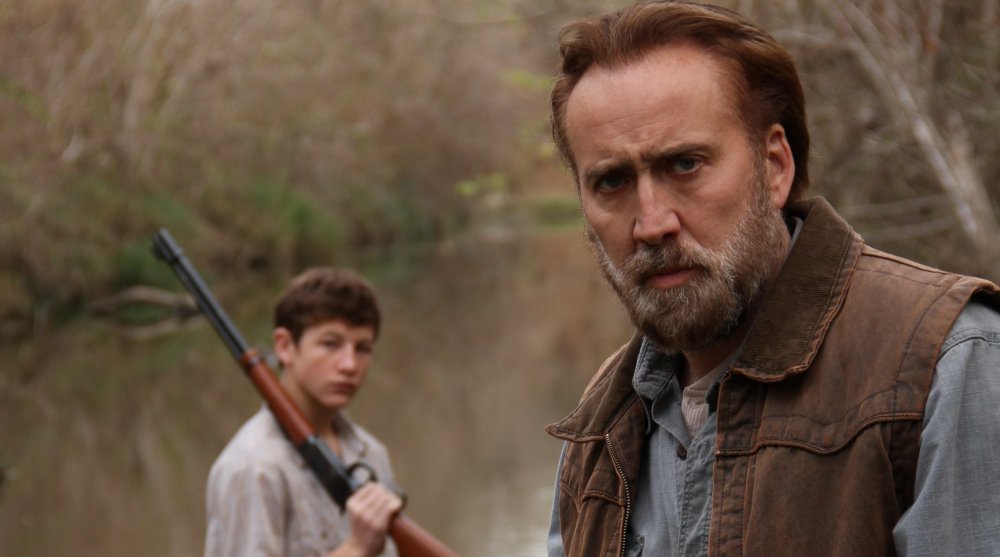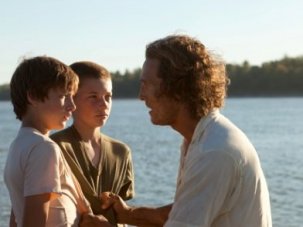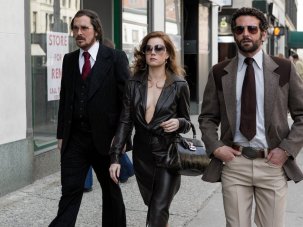Film trivia quiz teams of the future will be stumped by the question: “Which movie with a one-word, three-letter title, from a director influenced by Terrence Malick, starred Tye Sheridan as a young boy befriending a violent loner in the contemporary South?” The description fits both Jeff Nichols’s Mud (2012), in which the blunt-faced Sheridan was one of two teenagers who gravitated towards a fugitive (Matthew McConaughey), and David Gordon Green’s Joe, where Nicolas Cage is the volatile father figure.
USA 2013
Certificate 15 117m 4s
Director David Gordon Green
Cast
Joe Ransom Nicolas Cage
Gary Tye Sheridan
Wade, ‘G-Daawg’ Gary Poulter
Willie-Russell Ronnie Gene Blevins
Dolby Digital
In Colour
[2.35:1]
Distributor Curzon Film World
UK release date 25 August 2014
in cinemas and on Curzon Home Cinema
► Trailer
Not that the adolescent Gary is lacking one of those. The film begins with the boy being punched in the face by his actual father, the sozzled, psychopathic Wade (played by the non-professional actor Gary Poulter, who died shortly after filming). It is the first of many beatings the old soak dishes out. One of those, administered with a wrench on a homeless man, is sustained and explicit enough to have audiences whimpering for the comforts of the fire extinguisher scene in Irréversible.
The picture, adapted by Gary Hawkins from the novel by Larry Brown, locates Gary between two imperfect male role models, one of whom is at least trying to hold a lid on his rage. “What keeps me alive is restraint,” Joe confesses. “Most moments I shouldn’t do what I wanna do.”
There is a pleasing synchronicity between Joe’s attempts to stem his temper and the effort made by Cage to keep his own actorly excesses in check. A handful of shots could reasonably end up in the widely-seen YouTube montage of tantrums and wig-outs entitled Nicolas Cage Losing His Shit – notably his apoplectic rage (mirrored in a jangling bells-and-whistles score by Jeff McIlwain and David Wingo) when confronted with a belligerent guard dog: “I love dogs! Just not that dog! That dog is an asshole!”
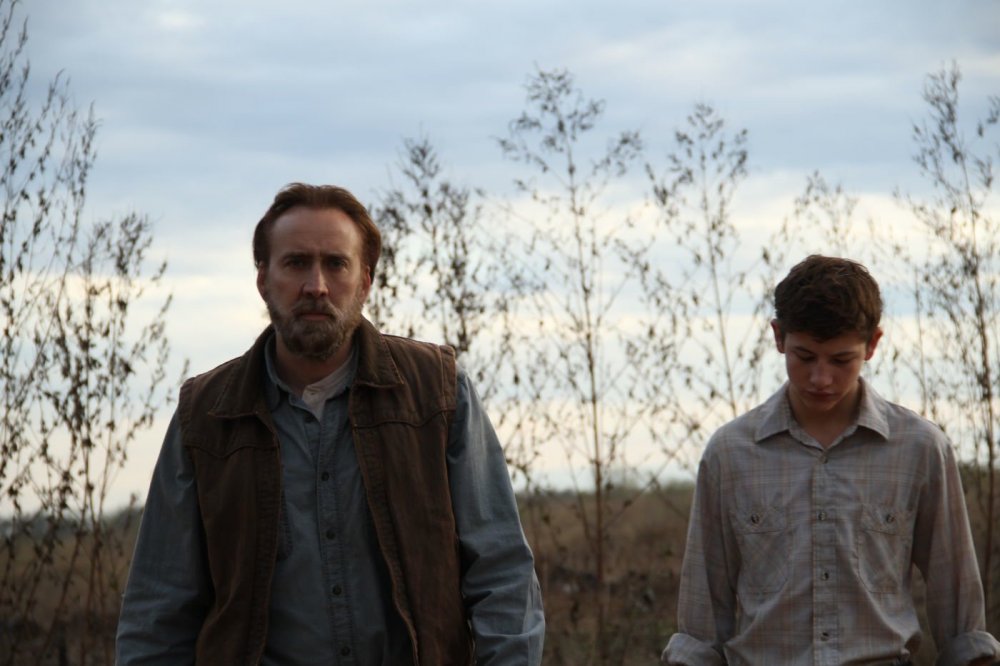
For the most part, this is a saner, quieter Cage. His riffs are limited to juicy bonding scenes with his young co-star, such as the acting lessons Joe gives Gary while they mooch around a motorboat junkyard (“Show me pain. Now smile. No. Smile on top of the pain”).
Despite his charisma, the movie doesn’t let us forget that Joe is only a few notches up from Wade. One element that distinguishes Green as a filmmaker is his reluctance to sentimentalise Joe, or to entirely demonise Wade. For all that his emotional nerve endings are dead, the old man is permitted a tender scene of mutual buffoonery with his son that is no less poignant for being anomalous. Both Joe and Wade are products of a culture where violence, machismo and poverty are inseparable. The challenge for Gary is to survive untainted. Green ends the film by repeating a composition used in the opening shot to suggest that the odds are in his favour.
Those looking for further evidence of doubling might care to know that Green calls Joe the “dark, disturbing older brother” to his whimsical 2013 buddy movie Prince Avalanche. The films share the Texan woodland landscape (Cage helped Green scout locations on Prince Avalanche) and a 1970s grammar (crash-zooms being a particular favourite) but the view of nature is different. Bucolic in the earlier movie, in Joe it’s a place of savagery and toxicity. Joe leads a team of labourers who kill off forests with “juice hatchets” that weaken the trees in advance of the lumber companies coming in to clear the land for development. Joe spends his life literally poisoning nature.
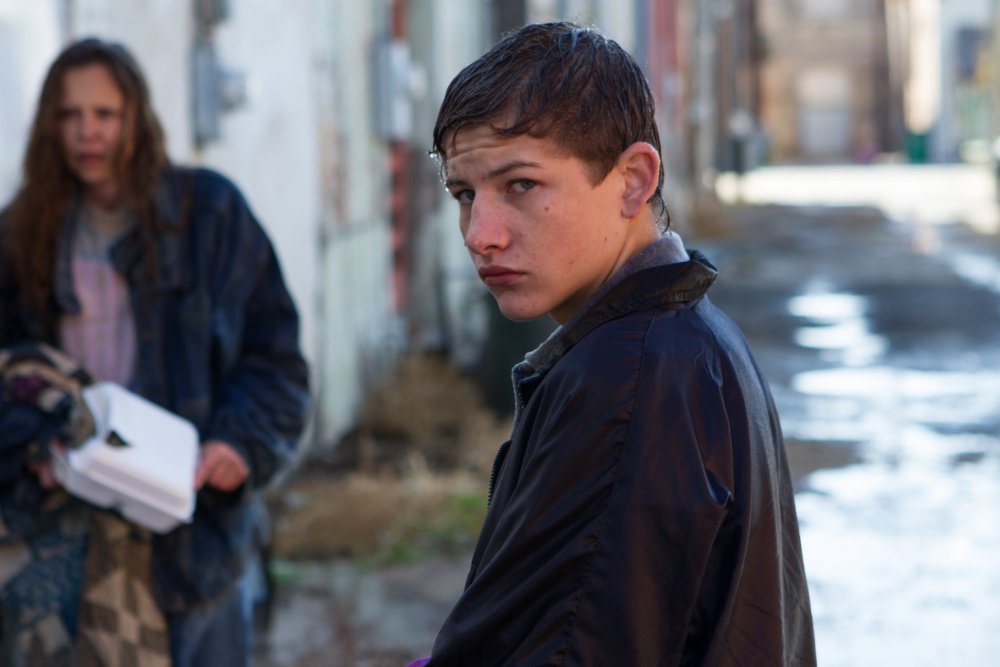
Green’s regular cinematographer, Tim Orr, brings to the exteriors his characteristically ripe, rich palette. Less predictable is the way the apparently squalid interiors compete in this aesthetic beauty contest. Sunlight blasts through coloured curtains, drenching one room in a brothel a lush orange, the next a ridiculous pink that tickles the eye. Divisions between external and internal, home and nature, are being eroded subtly. A pastoral scene of dogs at play is stitched onto Joe’s furniture; in his neighbours’ house hangs a freshly slaughtered deer from which Joe rips the skin as though peeling a wetsuit from a diver’s body.
The argument that Green is a director whose work can be divided easily into arthouse (such as his first two films, George Washington and All the Real Girls) and the disreputable mainstream (stoner comedies like Pineapple Express and Your Highness) has lost traction with Prince Avalanche and Joe. (It doesn’t look likely to fall back into favour either with his next film, the low-budget thriller Manglehorn, starring Al Pacino.) Affection for the overcooked, offhand violence of 1980s exploitation runs through most of his work (including the comedies). More vivid, though, is the relish, shared with countrymen like Howard Hawks, Jonathan Demme and David O. Russell, for people, community and toil.
In the August 2014 issue of Sight & Sound
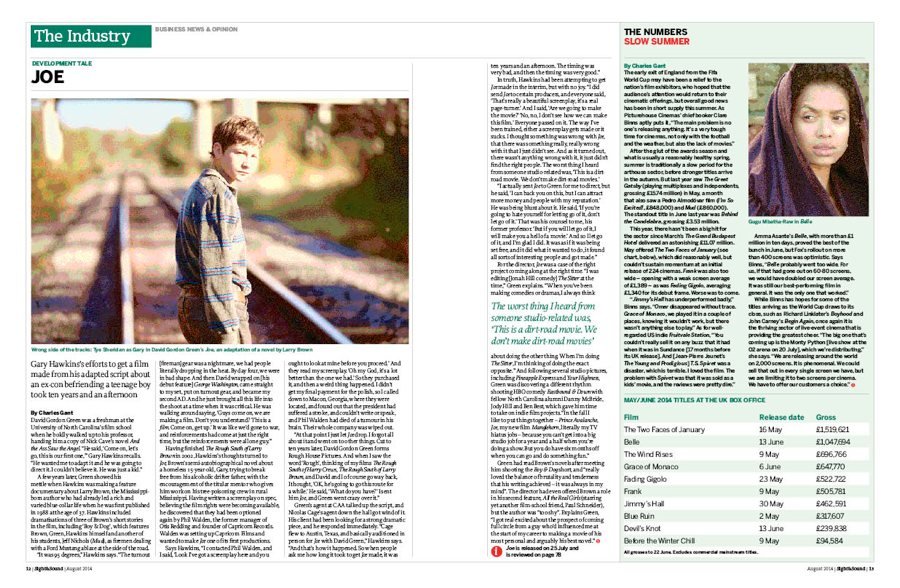
Development tale: Joe
Gary Hawkins’ efforts to get a film made from his adapted script about an ex-con befriending a teenage boy took ten years and an afternoon. By Charles Gant.
-
Sight & Sound: the August 2014 issue
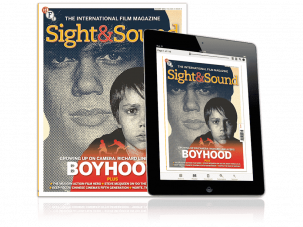
Richard Linklater on Boyhood, Steve McQueen on Do the Right Thing, action-blockbuster stars, China’s Fifth Generation, One Night in 1914 –...




